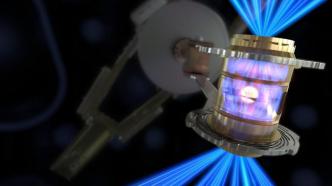
Recently, researchers from the United States and China published a paper in the British journal Nature, saying that they have made a breakthrough in the tokamak nuclear fusion experiment, which not only raised the upper limit of plasma density, but also enabled the plasma to maintain a steady state operation in a high confinement mode. The new research has pushed the controlled nuclear fusion technology one step further towards commercialization, but whether it can be extended to larger-scale equipment remains to be verified.
Controlled nuclear fusion technology is expected to provide humans with nearly unlimited clean energy and help them get rid of their dependence on fossil fuels. The Tokamak reactor is a ring-shaped device that uses magnetic confinement to achieve controlled nuclear fusion and is considered one of the most promising designs for reactors that use nuclear fusion to generate electricity. In a Tokamak reactor, hydrogen isotopes deuterium and tritium are heated to ultra-high temperatures to produce plasma. A strong magnetic field confines the high-temperature plasma in a ring-shaped pipe, causing a fusion reaction to occur.
The British magazine New Scientist reported that it is generally believed that there is a critical point of plasma density in tokamak nuclear fusion reactions, namely the "Greenwald limit". Experiments have shown that increasing the density of plasma can increase energy output. However, when the plasma density reaches the "Greenwald limit", it cannot be further increased, otherwise the plasma will escape the magnetic field confinement and cause damage to the reactor.
In the latest research, a team including General Atomics, Lawrence Livermore National Laboratory and the Institute of Plasma Physics of the Chinese Academy of Sciences successfully enabled the DuBright III-D Tokamak nuclear fusion experiment in the United States to operate stably for 2.2 seconds when the average plasma density was 20% higher than the "Greenwald limit"; at the same time, it also achieved an energy confinement level about 50% higher than the standard high confinement mode.
The researchers reportedly tried to combine different existing methods to create a new operating mechanism. They increased the energy output by increasing the density of the core of the "donut" shaped plasma, while allowing the plasma density to drop near the edge of the containment vessel to prevent plasma escape. They also injected deuterium gas into the plasma to calm the reaction in specific locations.
The researchers note that this operating mechanism could support some key requirements in the world's existing nuclear fusion reactor designs and open up a potential path to producing economically attractive fusion energy.
- caRtUpuKgQaod08/22/2025
- QpnZqbnE08/21/2025

